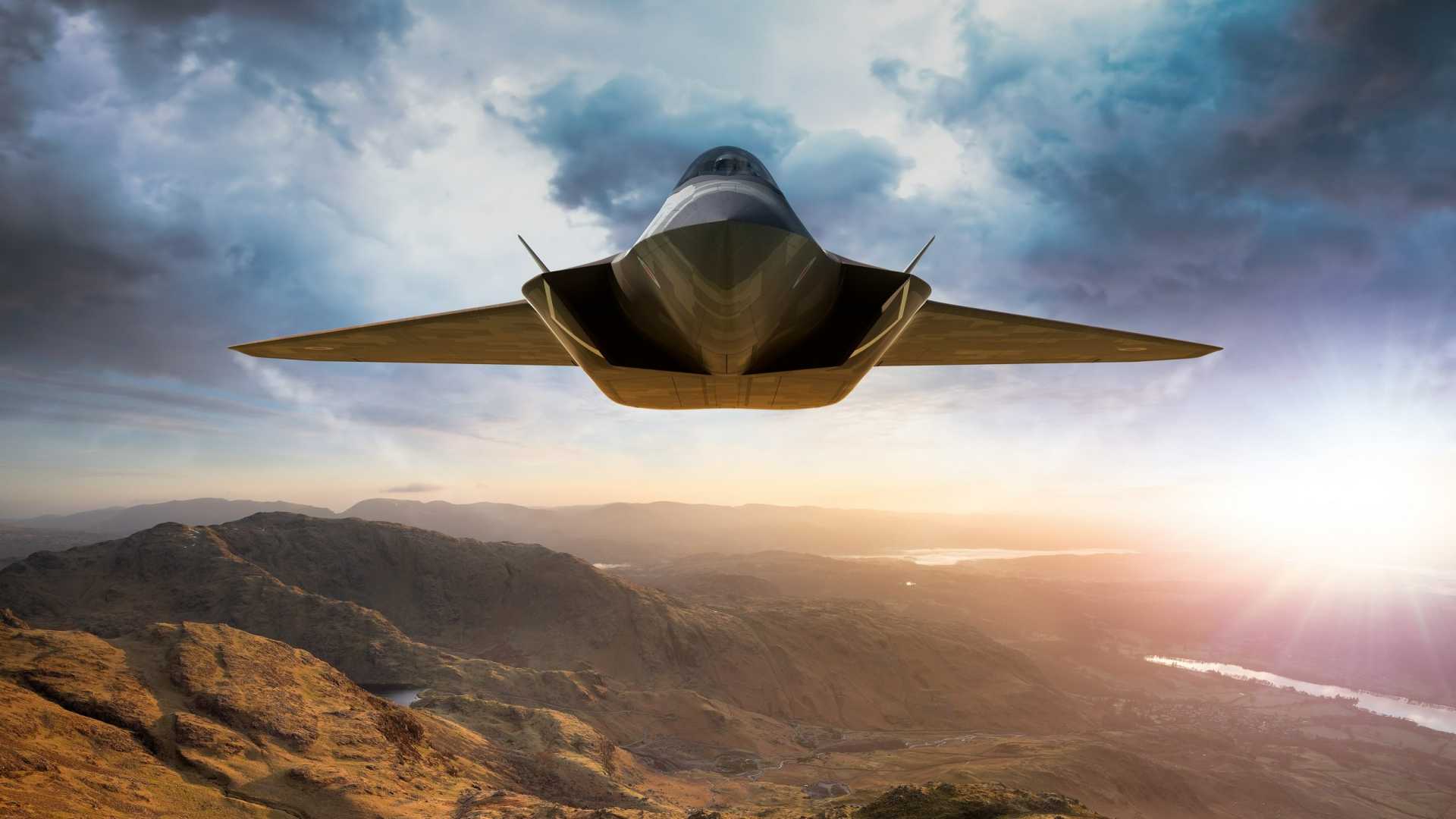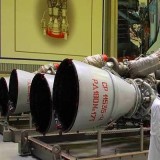Global Combat Air Programme leads Europe’s sixth-generation fighter race as rival project delays

{loadposition bannertop}
{loadposition sidebarpub}
On December 13, 2024, BAE Systems (UK), Leonardo (Italy), and Japan Aircraft Industrial Enhancement Co. Ltd. (JAIEC) announced the formation of a joint venture for the Global Combat Air Programme (GCAP). This collaboration builds on the UK-Japan-Italy partnership established with the program’s launch in December 2022 and reflects their progress, in contrast to challenges faced by the Franco-German-Spanish Future Combat Air System (FCAS). The joint venture assigns equal ownership of 33.3% to each company and is tasked with designing, developing, and delivering a next-generation combat aircraft by 2035. The aircraft is expected to remain operational beyond 2070.Follow Army Recognition on Google News at this link
The GCAP is a sixth-generation combat aircraft jointly developed by the UK, Japan, and Italy, set to replace aging Eurofighter Typhoon and Mitsubishi F-2 fleets by 2035. (Picture source: GCAP)
The joint venture will operate out of the UK, where it will be headquartered alongside the GCAP International Government Organisation (GIGO), established to synchronize industrial and governmental collaboration. Manufacturing and assembly will be subcontracted to prominent industry participants, including BAE Systems, Leonardo, and Mitsubishi Heavy Industries. Operations are expected to commence by mid-2025, with the first CEO from Italy. Multinational operational teams will work across the UK, Japan, and Italy, ensuring balanced contributions and reinforcing the commitment of all three nations to equal participation.
The GCAP program was established to replace the Eurofighter Typhoon and Mitsubishi F-2 platforms, merging the UK’s Tempest program with Japan’s F-X development. This alignment was formalized in December 2023 through a treaty defining financial contributions and responsibilities, while also creating the GCAP International Government Organisation (GIGO)’s governance framework. The program integrates expertise and resources across the three nations to develop advanced combat capabilities addressing evolving security threats and emphasizing technological collaboration.
The program’s strategy centers on a “system of systems” concept, incorporating manned and unmanned platforms capable of operating across air, space, and cyber domains. The sixth-generation aircraft will feature advanced stealth technologies, artificial intelligence, augmented reality cockpits, adaptive engines, and modular open architectures for continuous upgrades. A technology demonstrator is planned for 2027, with production expected by 2030. Engine development involves Rolls-Royce (UK), IHI Corporation (Japan), and Avio Aero (Italy), while sensing and integration systems are being developed by Leonardo (Italy and UK), Mitsubishi Electric (Japan), and ELT Group (Italy).
During the press conference announcing the new joint venture, a BAE Systems representative described the Global Combat Air Programme (GCAP) as “the only credible sixth-generation program outside Russia, China, and the US,” implicitly referencing slower progress in other programs like the Future Combat Air System (FCAS). Indeed, the partnership’s equal stakeholder model and structured approach have enabled GCAP to progress steadily toward its goals, with its first deployment planned for 2035. In contrast, the Franco-German-Spanish FCAS faces delays and challenges stemming from disagreements over intellectual property and industrial responsibilities, which are expected to be addressed at an upcoming summit to advance the program to its demonstrator phase. While both projects are progressing, the GCAP appears to be on a faster timeline, aligning with BAE Systems’ characterization of it as a credible sixth-generation program outside Russia, China, and the United States.
As a reminder, sixth-generation fighter aircraft are designed to enhance air-to-air combat, ground support, and survivability in contested environments, including anti-access/area denial (A2/AD) scenarios. These platforms feature advanced stealth, optionally manned configurations, AI-driven systems, and digital integration. Operating in networked environments, they coordinate with satellite drones, ground sensors, and other assets for expanded capabilities. Key features include variable-cycle engines for efficiency and thrust, long-range stand-off weapons, and advanced cockpit systems. Directed-energy weapons and modular software architectures are under consideration, but specifications depend on technological progress and budgets.
Globally, sixth-generation fighter programs are underway in multiple nations. The United States is developing the Next Generation Air Dominance (NGAD) and F/A-XX programs for the Air Force and Navy, emphasizing unmanned integration and stealth. In Europe, the Global Combat Air Programme (GCAP) and the Franco-German-Spanish Future Combat Air System (FCAS) are prominent initiatives. Russia is working on the Mikoyan PAK DP, while China is advancing designs like the Baidi B-Type aircraft. Nations like Sweden, Brazil, and India are integrating sixth-generation elements into their current or future programs, with timelines extending into the mid-century.

{loadposition bannertop}
{loadposition sidebarpub}
On December 13, 2024, BAE Systems (UK), Leonardo (Italy), and Japan Aircraft Industrial Enhancement Co. Ltd. (JAIEC) announced the formation of a joint venture for the Global Combat Air Programme (GCAP). This collaboration builds on the UK-Japan-Italy partnership established with the program’s launch in December 2022 and reflects their progress, in contrast to challenges faced by the Franco-German-Spanish Future Combat Air System (FCAS). The joint venture assigns equal ownership of 33.3% to each company and is tasked with designing, developing, and delivering a next-generation combat aircraft by 2035. The aircraft is expected to remain operational beyond 2070.
Follow Army Recognition on Google News at this link
The GCAP is a sixth-generation combat aircraft jointly developed by the UK, Japan, and Italy, set to replace aging Eurofighter Typhoon and Mitsubishi F-2 fleets by 2035. (Picture source: GCAP)
The joint venture will operate out of the UK, where it will be headquartered alongside the GCAP International Government Organisation (GIGO), established to synchronize industrial and governmental collaboration. Manufacturing and assembly will be subcontracted to prominent industry participants, including BAE Systems, Leonardo, and Mitsubishi Heavy Industries. Operations are expected to commence by mid-2025, with the first CEO from Italy. Multinational operational teams will work across the UK, Japan, and Italy, ensuring balanced contributions and reinforcing the commitment of all three nations to equal participation.
The GCAP program was established to replace the Eurofighter Typhoon and Mitsubishi F-2 platforms, merging the UK’s Tempest program with Japan’s F-X development. This alignment was formalized in December 2023 through a treaty defining financial contributions and responsibilities, while also creating the GCAP International Government Organisation (GIGO)’s governance framework. The program integrates expertise and resources across the three nations to develop advanced combat capabilities addressing evolving security threats and emphasizing technological collaboration.
The program’s strategy centers on a “system of systems” concept, incorporating manned and unmanned platforms capable of operating across air, space, and cyber domains. The sixth-generation aircraft will feature advanced stealth technologies, artificial intelligence, augmented reality cockpits, adaptive engines, and modular open architectures for continuous upgrades. A technology demonstrator is planned for 2027, with production expected by 2030. Engine development involves Rolls-Royce (UK), IHI Corporation (Japan), and Avio Aero (Italy), while sensing and integration systems are being developed by Leonardo (Italy and UK), Mitsubishi Electric (Japan), and ELT Group (Italy).
During the press conference announcing the new joint venture, a BAE Systems representative described the Global Combat Air Programme (GCAP) as “the only credible sixth-generation program outside Russia, China, and the US,” implicitly referencing slower progress in other programs like the Future Combat Air System (FCAS). Indeed, the partnership’s equal stakeholder model and structured approach have enabled GCAP to progress steadily toward its goals, with its first deployment planned for 2035. In contrast, the Franco-German-Spanish FCAS faces delays and challenges stemming from disagreements over intellectual property and industrial responsibilities, which are expected to be addressed at an upcoming summit to advance the program to its demonstrator phase. While both projects are progressing, the GCAP appears to be on a faster timeline, aligning with BAE Systems’ characterization of it as a credible sixth-generation program outside Russia, China, and the United States.
As a reminder, sixth-generation fighter aircraft are designed to enhance air-to-air combat, ground support, and survivability in contested environments, including anti-access/area denial (A2/AD) scenarios. These platforms feature advanced stealth, optionally manned configurations, AI-driven systems, and digital integration. Operating in networked environments, they coordinate with satellite drones, ground sensors, and other assets for expanded capabilities. Key features include variable-cycle engines for efficiency and thrust, long-range stand-off weapons, and advanced cockpit systems. Directed-energy weapons and modular software architectures are under consideration, but specifications depend on technological progress and budgets.
Globally, sixth-generation fighter programs are underway in multiple nations. The United States is developing the Next Generation Air Dominance (NGAD) and F/A-XX programs for the Air Force and Navy, emphasizing unmanned integration and stealth. In Europe, the Global Combat Air Programme (GCAP) and the Franco-German-Spanish Future Combat Air System (FCAS) are prominent initiatives. Russia is working on the Mikoyan PAK DP, while China is advancing designs like the Baidi B-Type aircraft. Nations like Sweden, Brazil, and India are integrating sixth-generation elements into their current or future programs, with timelines extending into the mid-century.




